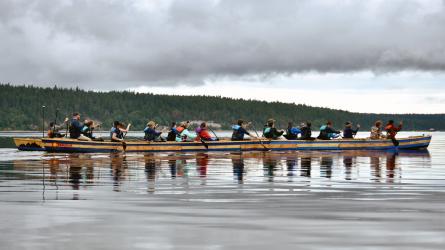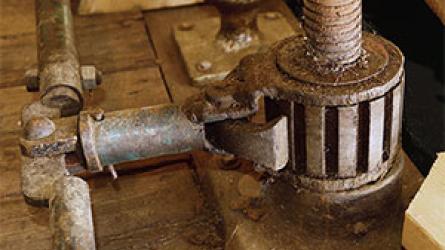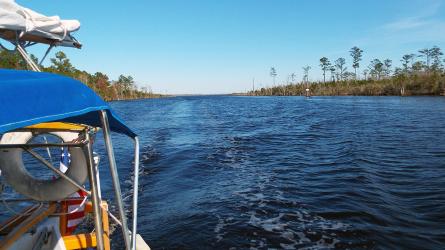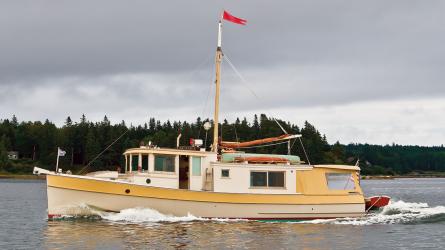January / February 2020
The Lake Boats of Finland
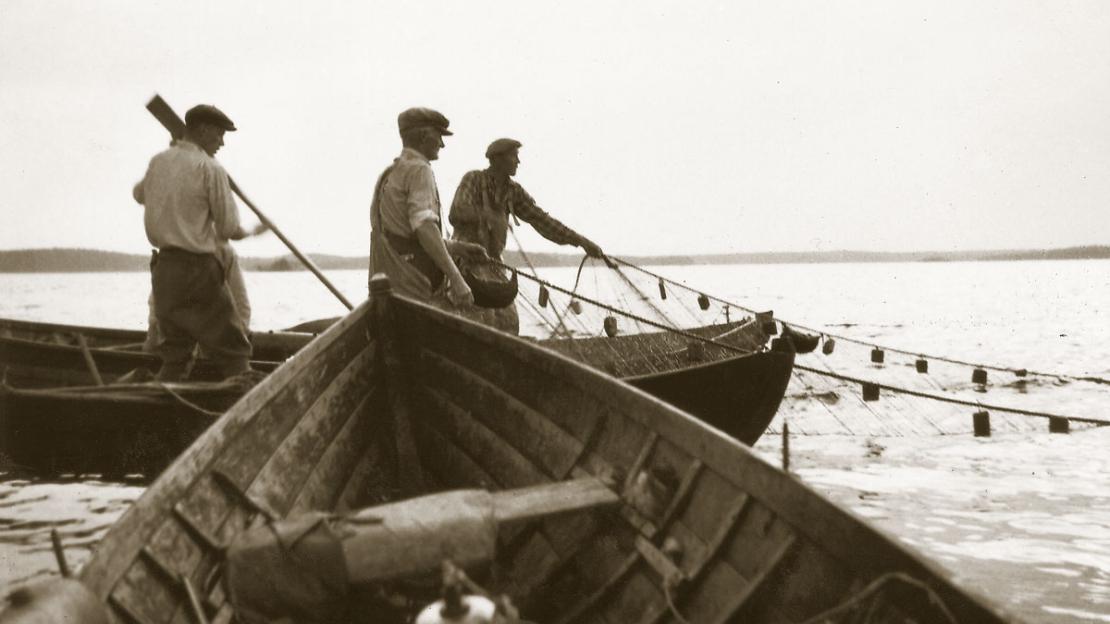
In this 1952 photograph, fishermen Simo, Urho, and Matti Ahkgrén of Padusta, Finland, haul a seine on Lake Näsijärvi. Aside from the use of modern adhesives and materials, Finnish lake boats have changed little over centuries.
Tero Mustonen has a sharp eye for the small craft known simply as “lake boats” in Finland. He runs an organization, Snowchange, that, among other things, strives to protect commercial and recreational lake fisheries in which the traditional lapstrake rowing skiffs and their descendants still play a central role.
On one mosquito-thick evening, Mustonen rows a lake boat—in this case a modern fiberglass version—onto a remote lake to check a fish trap. “We don’t know what fish are in this lake,” he says, “so the trap is to help find out what’s here.” He lands one pike. When we return to shore, he points out a wooden version of this iconic Finnish skiff lying upside down across two logs. At about 15' long and lapstrake-planked (or “clinker-built,” as they say here), it is typical. “It’s a good example of what can be done,” Mustonen says as he runs his hand along the edge of a plank, “but by no means a masterpiece.”
Lake boats have sharply curved stems and sweeping sheerlines. For centuries, such boats have been the workhorses of the lakes of Karelia, a culturally distinct region of eastern Finland. Even in its language, the area shares Uralic linguistic roots that are rare in Europe, surviving only in Finland, Estonia, and Hungary: “We are, in a linguistic way, the westernmost outpost of Siberia,” Mustonen says. Culturally, Karelia spans the border between Finland and Russia, and, despite the area’s difficult history, lake boats are ubiquitous on both sides of the border.
To read the rest of this article:
Click the button below to log into your Digital Issue Access account.
No digital access? Subscribe or upgrade to a WoodenBoat Digital Subscription and finish reading this article as well as every article we have published for the past 50-years.
ACCESS TO EXPERIENCE
2-for-1 Print & Digital Subscription Offer
For this holiday season, WoodenBoat is offering our best buy one, get one deal ever. Subscribe with a print & digital subscription for $42.95, and we’ll give you a FREE GIFT SUBSCRIPTION to share with someone special.
1 YEAR SUBSCRIPTION (6 ISSUES)
PLUS ACCESS TO MORE THAN 300 DIGITAL BACK ISSUES
PRINT+DIGITAL $42.95
Subscribe
To read articles from previous issues, you can purchase the issue at The WoodenBoat Store link below.
 Purchase this issue from
Purchase this issue from




